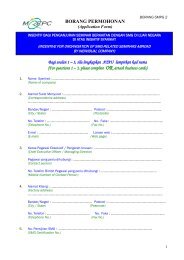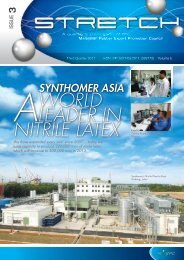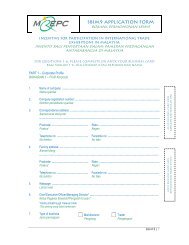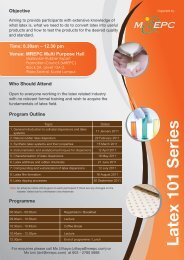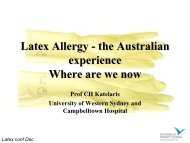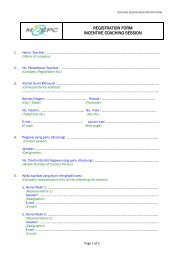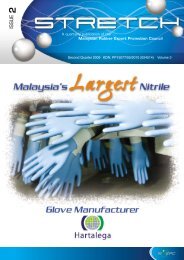Create successful ePaper yourself
Turn your PDF publications into a flip-book with our unique Google optimized e-Paper software.
The Guideline concluded that “the evidence does not therefore support a complete ban on the use of latex gloves.<br />
Institutions should judge whether their needs would be met better by the use of latex-free or powder-free latex<br />
gloves, or use of both in different settings, while taking into account the desirable and undesirable properties of<br />
both materials.”<br />
There is no question whatsoever that the most important fi nding is detailed in the last bullet point, namely that<br />
‘no reports of new cases of latex allergy arising from non-powdered low protein latex glove use were found’. In<br />
other words, the use of powdered-free low protein NR latex gloves has been proven to be perfectly safe in the area<br />
of occupational health.<br />
(Source: NHS Plus, Royal College of Physicians, Faculty of Occupational Medicine. Latex Allergy: occupational aspects of management. A<br />
national guideline. London: RCP, 2008. Copyright © 2008 Royal College of Physicians. Adapted by permission).<br />
For the full report, see http://www.rcplondon.ac.uk/pubs/contents/f0ba178-f790-48e8-a764-b319357f974a.pdf<br />
8<br />
LATEX-FREE VS. LATEX-SAFE<br />
<strong>Issue</strong>s managers should consider | By Anita Shoup, RN, MSN, CNOR<br />
Latex allergies have been a concern in the healthcare environment for<br />
nearly two decades and can be a serious problem for patients and<br />
healthcare workers.<br />
Today the question is: Do healthcare facilities need to go “latex-free”?<br />
Some believe that replacing latex gloves with non-latex gloves will create<br />
a latex-free environment that is safer for patients and workers with<br />
latex allergies. However, because natural rubber latex can be found in<br />
more than 17,600 medical devices, one can begin to understand that<br />
simply replacing latex gloves with latex-free gloves is only the beginning.<br />
While it is considered impossible to remove all latex from the<br />
environment, when caring for a latex allergic individual any source of<br />
latex that could potentially contact the individual should be removed.<br />
Anita Shoup, RN, MSN, CNOR<br />
Clinical Nurse Consultant<br />
Gloves are an essential component of patient care necessary to ensure<br />
workplace safety in healthcare environments. With the prevalence today<br />
of bloodborne pathogens such as HIV, Hepatitis B, and Hepatitis C, barrier protection is critical for<br />
healthcare workers. Workers now need to presume that any patient who presents to a healthcare facility<br />
for treatment may be infected with a bloodborne pathogen, and healthcare workers need to wear the best<br />
protection available.<br />
When making the decision regarding latex-safe (powder-free, low protein gloves) versus “latexfree” (use<br />
of non-latex gloves), facilities must weigh all considerations.



